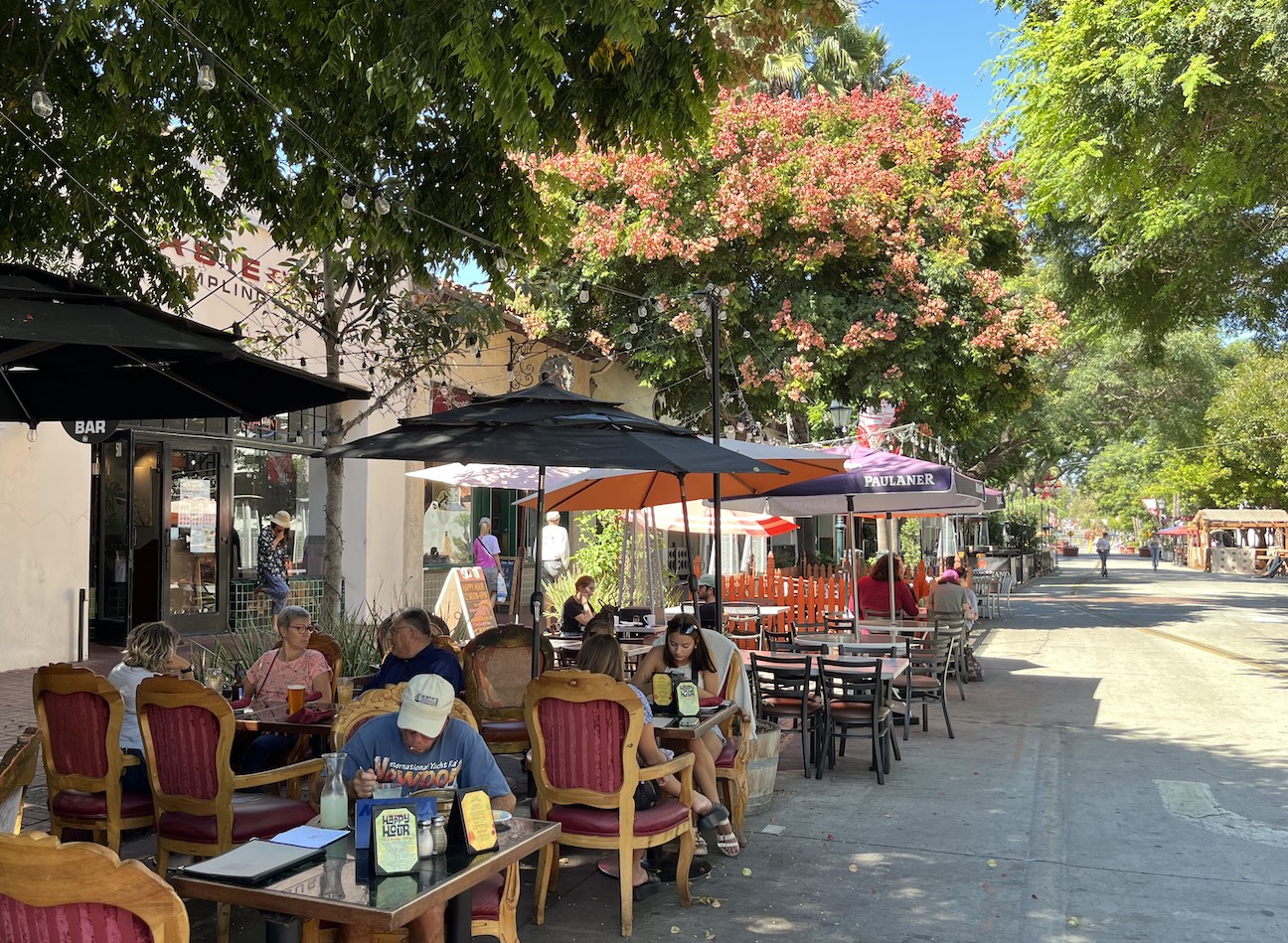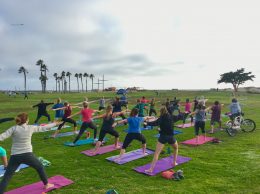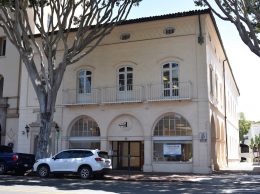Santa Barbara, Ventura to keep streets closed, outdoor dining open through at least 2024
IN THIS ARTICLE
- Latest news Topic
- Julia Staley Author
By Julia Staley Thursday, October 6th, 2022

Lower State Street will remain closed to vehicle traffic for at least two more years, and restaurants will likely start paying for their outdoor dining “parklets,” according to new requirements recently adopted by the Santa Barbara City Council.
In the tri-county area, only the cities of Santa Barbara and Ventura have left their main downtown streets closed to vehicle traffic since the COVID-19 pandemic started. The Ventura City Council has voted to keep the downtown section of Main Street closed to vehicles, and open to outdoor dining, at least until the middle of 2024. In Santa Barbara, State Street will remain closed to vehicles for between two and five years while the city works on a State Street Master Plan.
Under the guidelines approved Sept. 20 by the Santa Barbara City Council, both new and existing State Street parklets must be stained, painted or colored a city-approved color. Restaurant parklets will also be prohibited from having lattice or picket fences, turf, carpet or faux grass, plastic or white furniture, neon or flashing lights, lights strung across the sidewalks or through trees, and advertising, logos or other promotional materials.
The new rules go into effect Feb. 1, 2023.
The council also voted to send to its Finance Committee a proposal to charge businesses $5 per square foot for parklets and outdoor facilities in the street.
Businesses have until Dec. 1 of this year to comply with another new rule: Parklets must have raised platforms to allow for storm water to flow under them.
Parklets built from now on will have to be portable, but the city won’t require existing parklets to be made portable. Because of that, parades such as the ones for summer solstice and Old Spanish Days Fiesta won’t be returning to State Street in the near future. This year, the Fiesta parade was held along Cabrillo Boulevard on the waterfront.
Robin Elander, the executive director of the Downtown Santa Barbara business organization, told the Business Times in an email interview that some business owners think the new rules don’t allow for “entrepreneurial creativity in the look and feel of the business’s outdoor dining space.”
“Despite this, restaurateurs, and their clientele are happy that outdoor dining downtown is allowed to stay as most people prefer to still eat outside,” she said.
The council approved the guidelines on a 5-2 vote, with Mayor Randy Rowse and Councilmember Eric Friedman dissenting.
“I don’t think we addressed the major issues when it’s coming to maintenance and safety and certainly the aesthetic preservation of the downtown,” Rowse said.
Rowse said he thinks floodwater accommodation should be prioritized more, and that roofs on both new and existing parklets should be prohibited. He believes parklet portability should be required for both new and existing street parklets to allow for periodic deep cleaning and the opportunity for State Street parades to return.
In Ventura, there has been mostly positive feedback about outdoor dining from residents and owners of downtown restaurants, said Meredith Hart, the city’s economic development manager.
“Right now, we are seeing it be very successful,” she said of the city’s “Main Street Moves” program to close the street to vehicles and allow parklets. “But history shows that they don’t always stay successful forever.”
Because of this, Ventura’s program is oriented towards flexibility, giving the City Council the ability to change the street structure in the future, such as opening it to vehicles on certain days. Recently, the council voted to reopen California Street, which crosses Main, to vehicle traffic.
Though outdoor dining and closes streets are popular with restaurant owners, not every downtown business has benefited.
“Having the street closed to cars makes it a lot harder for my regulars to be able to just get to me conveniently,” said Michelle Stevens, the owner and founder of the Refill Shoppe on Main Street in downtown Ventura.
Stevens stressed that the closed street hinders customers’ convenient parking and increases delivery workers’ difficulty in getting supplies to her store.
“I love the restaurant scene in Ventura,” she said. “I eat downtown all the time, I know a lot of the restaurant owners … but I feel like a lot of it is geared towards that one specific focus and I personally think something more mixed-use is of course a more balanced approach and response and solution.”
In both Ventura and Santa Barbara, downtown streets were closed to vehicles early in the pandemic, and city planners did not set a hard date for them to reopen. Now, these changes are looking at least semi-permanent.
“I don’t think anybody anticipated that when we created this program, that it would last as long as it has. And that’s a great thing,” said Tess Harris, the city of Santa Barbara’s State Street master planner. “But it also means that we need to start to think about what the downtown areas and spaces look like. We really want, over the next year, to test and try different things in the space to see what works, and perhaps what doesn’t work so well, so that the city can learn from that.”
RELATED: Read Business Times editor Henry Dubroff’s column on what ails State Street and how to fix it here.
Related Articles
 Friday, July 29th, 2022
Friday, July 29th, 2022
Our View: Will keeping State Street closed to cars help prompt the area’s latest rebirth?
 Friday, July 8th, 2022
Friday, July 8th, 2022









